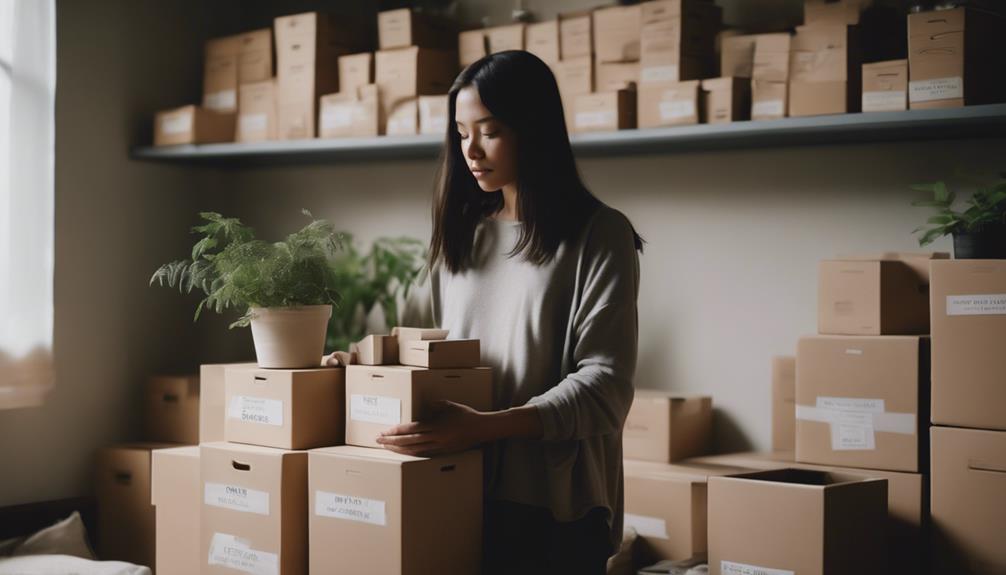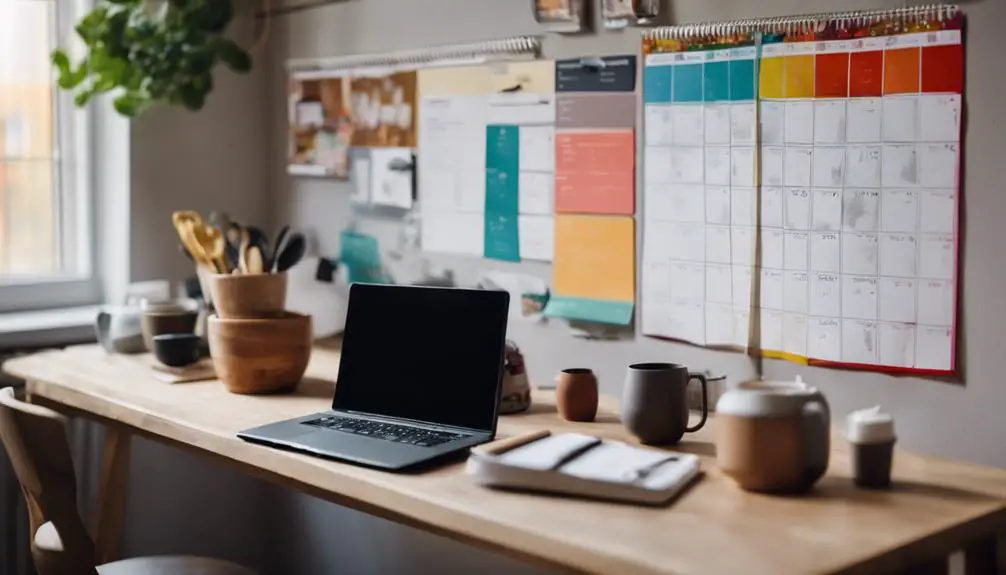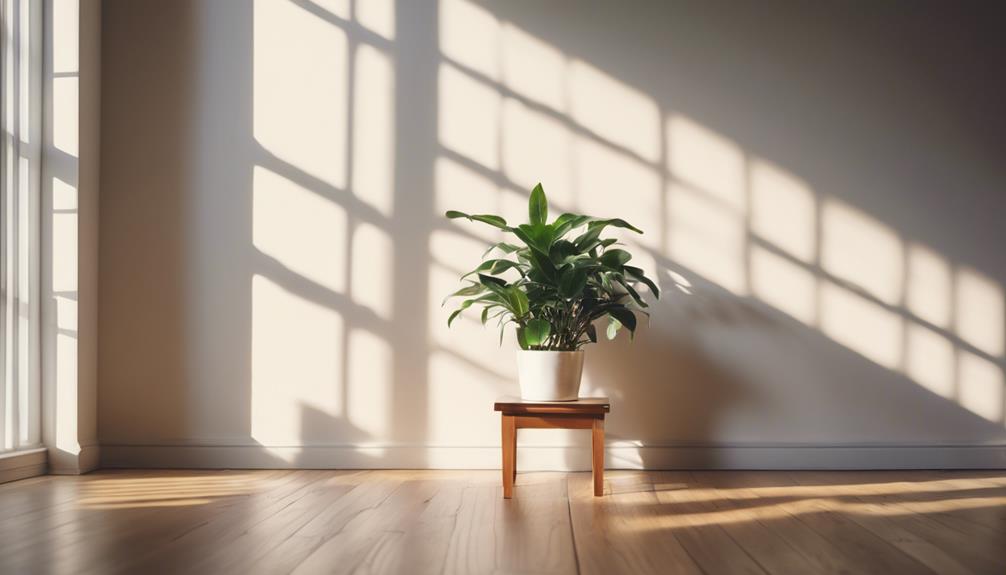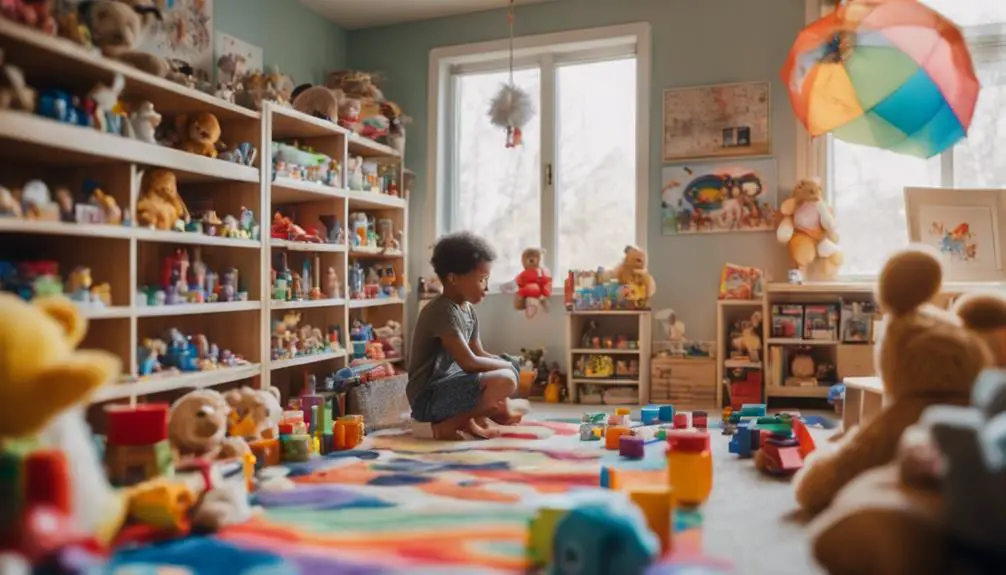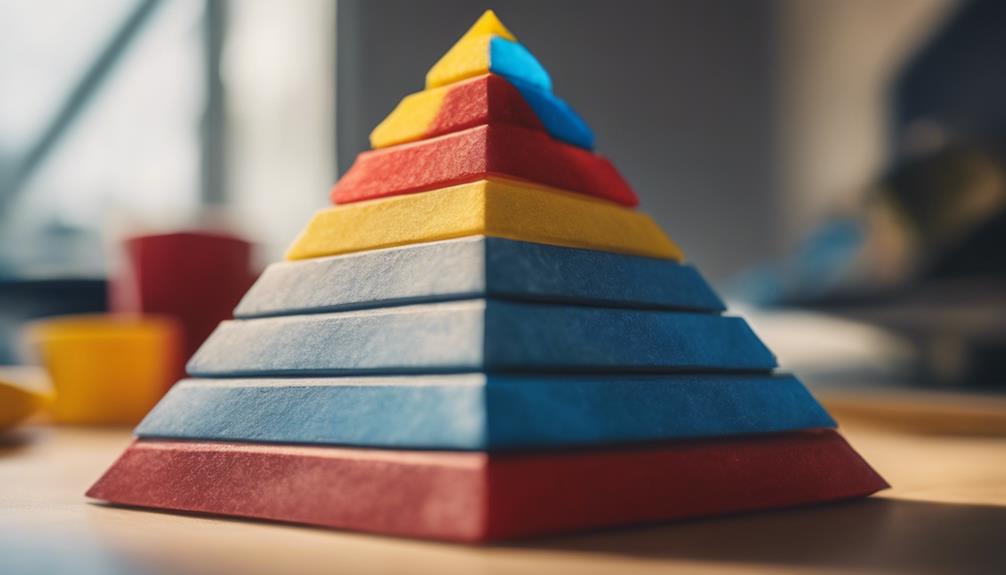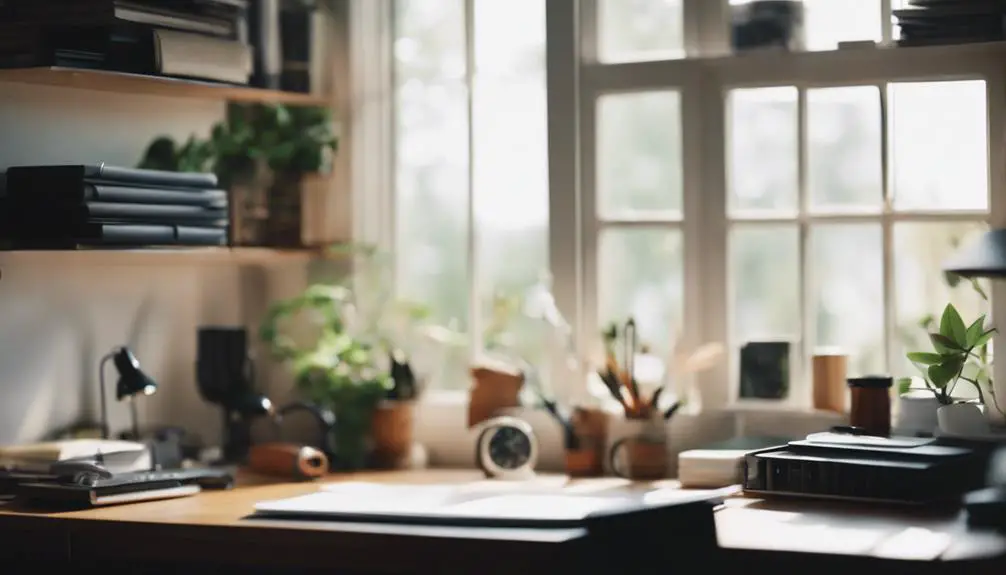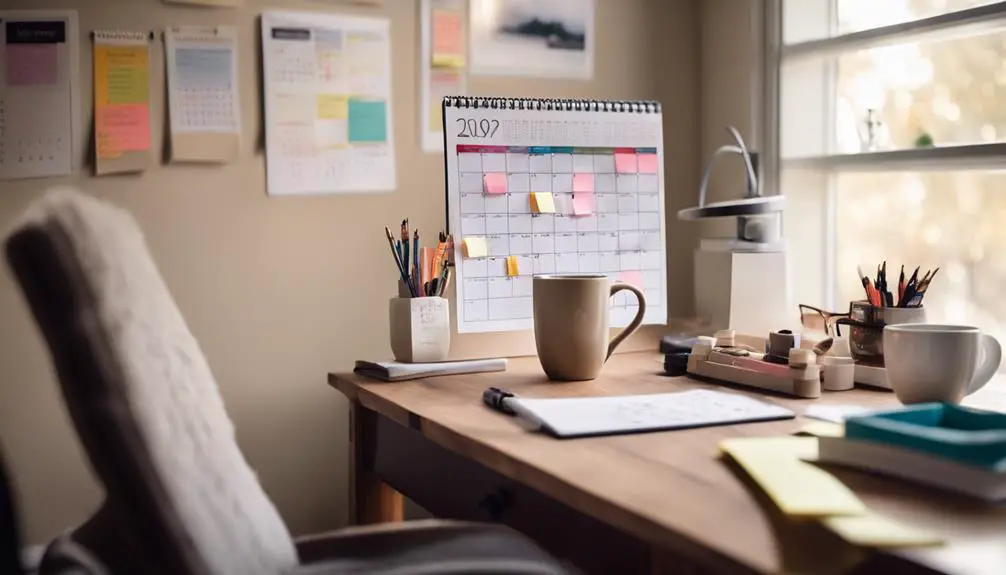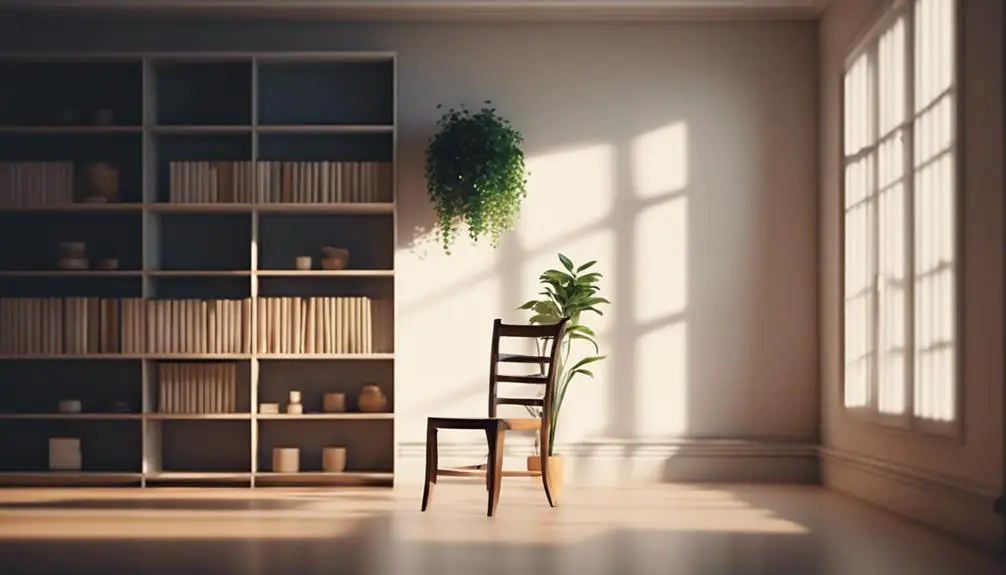Emotional attachment to possessions can significantly influence your life and personal development. Understanding this connection allows you to evaluate your belongings and determine what genuinely holds value for you.
This process goes beyond simply getting rid of clutter; it is a path toward adopting a minimalist lifestyle that reflects your fundamental principles. As you embark on the initial steps of this guide, you may uncover unexpected revelations about yourself.
Letting go of items might actually bring you closer to achieving the life you aspire to lead.
Understand Emotional Attachment
When considering emotional attachment, it’s important to recognize how it often arises from personal experiences and memories associated with specific items. This connection can be intense, as it’s linked to attachment theory, where the exploration of self-identity merges with your personal values.
However, in a consumer-driven society that emphasizes materialism, these possessions can adversely affect your emotional resilience. The psychological impact of holding onto belongings can result in clutter and stress, which can impede your emotional healing process. Social pressures can exacerbate this attachment, leading you to retain items that don’t contribute to your sense of freedom.
Acknowledging the importance of decluttering can yield substantial advantages; it creates room for personal growth and new experiences, liberating you from the emotional burden of unnecessary possessions.
For instance, consider the difference between sentimental items that enhance your life—like a family heirloom or a photograph that brings joy—and those that simply clutter your space, like outdated clothing or broken gadgets. Evaluating what you truly value can help you make informed decisions about what to keep or let go.
Embracing minimalism and intentional living can foster a more fulfilling emotional environment, allowing you to focus on experiences and relationships rather than material goods.
Assess Your Possessions
Begin by examining your belongings to identify what is genuinely important to you. This is an opportunity to create a detailed inventory that emphasizes items with true significance. Assessing your possessions will help you distinguish between those that carry emotional value and those that simply occupy space.
To help organize your evaluation, consider using a table like the one below:
| Item | Emotional Value | Keep or Let Go? |
|---|---|---|
| Family Heirloom | High | Keep |
| Old T-shirt | Low | Let Go |
| Travel Souvenir | Medium | Keep |
| Unused Kitchen Gadget | Low | Let Go |
As you assess each item, reflect on whether it brings you joy or if you would miss it if it were no longer in your possession. This process is not merely about decluttering; it is about reclaiming your living space and enhancing your overall well-being. Letting go of items that no longer serve a purpose opens up room for peace and clarity in your life. By consciously deciding what to retain, you can fill your environment with items that truly resonate with you and add value to your daily experience.
Identify Triggers for Attachment
Recognizing what drives your attachment to items is crucial for effectively managing your belongings. Start by reflecting on the emotional ties you have with your possessions. Certain items may bring back vivid memories linked to your past experiences. Acknowledging these emotional triggers can clarify why you hold onto particular objects.
Examine your shopping habits and consider how nostalgia might influence them. Some items may be kept simply because they remind you of happier moments. Social pressures can also play a significant role; you might feel compelled to uphold a lifestyle that encourages a focus on material possessions.
Evaluate your lifestyle choices and see how they align with your core values. Are you purchasing items to fulfill emotional needs instead of genuine desires? Identifying these motivations allows you to begin separating yourself from the emotional baggage they carry.
Gaining insight into these factors helps you make informed decisions about what you truly need. This awareness can lead to a more liberated life, free from unnecessary attachments.
Embracing simplicity can lead to a more satisfying and fulfilling existence.
Set Clear Intentions
To liberate yourself from attachment, it’s essential to clarify your purpose for each item you possess.
Reflect on your minimalist aspirations and consider how they correspond with your core values. Establishing precise intentions will facilitate the process of releasing items that no longer contribute positively to your life.
For instance, if you own several pairs of shoes, evaluate which ones truly align with your lifestyle and preferences.
Keeping only those that serve a purpose won’t only create space but also enhance your overall sense of well-being.
Define Your Purpose
Defining your purpose is crucial for breaking the attachment to material possessions. Without a clear understanding of what matters, it becomes easy to hold onto items that no longer serve a meaningful role in your life. Clarity of purpose enables you to concentrate on what truly counts, helping you to eliminate distractions and embrace a sense of freedom.
Establishing clear intentions creates a pathway for your life, steering your decisions and actions in a purposeful direction.
Here are three effective methods to define your purpose:
- Identify Your Values: Take time to reflect on what’s truly important to you. Consider elements like family, creativity, or adventure. Understanding your core values allows you to prioritize effectively and let go of items that don’t align with those values.
- Visualize Your Ideal Life: Imagine the lifestyle you aspire to have. What achievements do you seek? Envisioning this ideal can help clarify which possessions genuinely support your aspirations and which ones you can release.
- Set Specific Goals: Document your intentions by writing them down. Develop clear, tangible objectives that resonate with your defined purpose. This practice not only reinforces your commitment but also keeps your focus sharp as you navigate your path toward freedom.
Defining your purpose and following these steps can significantly enhance your ability to declutter your life, making room for what truly enriches your journey.
Visualize Minimalist Goals
Visualizing minimalist goals is crucial for establishing clear intentions that steer your decluttering process. When you envision a life unburdened by excess, you cultivate strong motivation to part with items that hold you back.
Begin by employing visualization techniques to imagine your ideal living space. Consider the emotions associated with living in an environment that embodies your values and ambitions, where every item serves a meaningful purpose.
Embrace a minimalist perspective by concentrating on what genuinely brings you happiness and enhances your life. As you visualize, define your objectives. Do you aspire to have a tranquil living room, a tidy workspace, or simply a lighter emotional state?
Document your goals and display them prominently. This clarity will fortify your commitment when faced with distractions.
The freedom you desire is attainable. Each time you eliminate excess, you progress toward the life you envision. Approach this journey with openness and clarity, and you’ll notice the burdens of attachment begin to fade, granting you the freedom to flourish.
Practice Mindfulness Techniques
Mindfulness techniques offer a valuable way to break free from the cycle of attachment to material possessions. Grounding yourself in the present moment can lead to a greater sense of peace and release from the urge to cling to things.
Here are three effective techniques that you can implement:
- Mindful Breathing: Concentrate on your breath while dismissing distractions. This practice serves as an anchor in the present, promoting emotional stability and clarity.
- Gratitude Journaling: Dedicate a few moments each day to jot down what you appreciate in your life. This exercise shifts your mindset from feelings of lack to recognizing and valuing what you already possess, which can significantly enhance your overall contentment.
- Mindful Walking: When you walk, immerse yourself in your surroundings. Pay attention to the sensations in your body, the sounds in your environment, and the beauty of nature. Engaging in this practice increases your sensory awareness and deepens your connection to the world around you.
Incorporating loving-kindness meditation or body scanning into your daily routine can further nurture self-compassion.
Practicing non-judgmental observation and being aware of your thoughts fosters a mindset that diminishes attachment and embraces freedom. By setting clear intentions, you can work towards creating a more fulfilling, minimalist lifestyle that resonates with your values and desires.
Develop a Letting Go Mindset
To cultivate a letting go mindset, it’s essential to embrace the concept of impermanence. Understanding that all things are transient can significantly shift your focus from accumulating material possessions to cherishing meaningful experiences. Engaging in mindful awareness allows you to more easily release your attachments and truly appreciate the present moment.
Practicing mindfulness can take various forms, such as meditation or simply taking a few moments each day to reflect on your feelings and thoughts. For instance, when you feel a strong attachment to a possession or a past event, take a step back and acknowledge that change is a natural part of life. This acknowledgment can provide a sense of freedom, enabling you to let go of what no longer serves you.
Creating a habit of gratitude can also aid in developing this mindset. Consider keeping a journal where you note down things you’re grateful for each day. This can help you focus on the positive aspects of your life rather than what you lack or wish to hold onto.
Surround yourself with reminders of impermanence. For example, you might incorporate art or quotes in your living space that reflect the beauty of change and the importance of living in the moment. This can serve as a gentle nudge toward embracing a more fluid perspective on life.
Ultimately, adopting a letting go mindset fosters resilience and peace, allowing you to navigate life’s challenges with greater ease.
Embrace Impermanence Philosophy
Embracing the philosophy of impermanence can significantly change how you view your belongings and experiences. Recognizing that everything is temporary allows you to appreciate their fleeting beauty without becoming attached. This perspective builds emotional resilience and promotes a simpler, more intentional lifestyle.
Letting go opens up space for personal growth and freedom from material constraints, enabling you to make sustainable choices that align with your core values.
Here are three practical ways to embody this philosophy:
1. Prioritize Experiences Over Material Possessions: Shift your focus from accumulating items to creating meaningful memories. Engaging in experiences—such as traveling, attending concerts, or spending quality time with loved ones—enriches your life and contributes to long-lasting happiness.
For example, consider planning a weekend getaway instead of purchasing a new gadget. The memories you create will be far more valuable than any physical object.
2. Cultivate Mindful Gratitude: Take a moment to appreciate what you have right now, without the anxiety of potential loss. This practice fosters a sense of fulfillment and helps you to see the beauty in the temporary nature of life.
For instance, if you enjoy a delicious meal, savor every bite and acknowledge the joy it brings, rather than worrying about when you’ll have that meal again.
3. Embrace Minimal Living: Evaluate your possessions and keep only what truly adds value to your life. This deliberate approach to consumption can lead to greater clarity in your mind and a lighter spirit.
Consider decluttering your living space by donating items you no longer use, which not only simplifies your environment but also supports those in need.
Practice Mindful Awareness
Practicing mindful awareness can significantly change how you relate to your belongings, fostering a mindset that embraces letting go. Begin with mindful breathing to ground yourself in the present. As you inhale and exhale, pay attention to your thoughts and emotions regarding the items you possess. This practice enhances your sensory awareness and helps you manage your feelings more effectively.
To shift your perspective from scarcity to appreciation, engage in gratitude journaling. This exercise allows you to recognize and value what you already have, nurturing self-compassion along the way. It’s perfectly acceptable to acknowledge that certain attachments can be released.
Set clear intentions for your space by reflecting on what genuinely enhances your life and what does not. Visualize your life without clutter and emotional weight. Imagine the sense of freedom and lightness you’d experience.
Mindful consumption is crucial here; consider whether a new purchase truly aligns with your values and aspirations before introducing it into your life. For instance, if you’re contemplating buying a new piece of furniture, ask yourself how it will improve your daily environment and if it fits within your overall aesthetic and functional needs.
This thoughtful approach to acquiring possessions can lead to a more fulfilling and intentional living space.
Focus on Experiences
It’s common to form attachments to physical items, but shifting your attention to experiences can help you let go more easily. When you prioritize experiences over material possessions, you often find a richer sense of joy and emotional development. Each adventure presents an opportunity to create lasting memories, and appreciating every moment contributes significantly to your overall happiness.
Here are three effective strategies to help you embrace an experience-focused mindset:
1. Travel Exploration: Organize trips that foster deeper connections. Discovering new cultures and forming relationships not only enriches your life but also helps you build memories that will stay with you forever.
For instance, consider visiting a local market in a foreign city to interact with vendors, or join a community cooking class to learn about traditional culinary practices while making new friends.
2. Adventure Prioritization: Pursue activities that challenge your boundaries. Engaging in endeavors like hiking a mountain trail, participating in a pottery class, or attending an improv workshop emphasizes the joy of the experience rather than accumulating possessions.
For example, a weekend hiking trip with friends can lead to laughter and shared stories, enhancing your bond more than any new gadget could.
3. Relationship Building: Dedicate time to nurture the relationships that matter most. Have meaningful conversations that promote emotional growth and shared experiences.
Organizing a game night or a potluck dinner can create a warm atmosphere for connection, making those interactions far more valuable than any physical object.
Focusing on experiences not only enriches your life but also fosters deeper connections with others, creating a lasting legacy of joy and fulfillment.
Create a Decluttering Plan
Creating a decluttering plan is vital for freeing yourself from the emotional ties to material possessions. A well-structured approach allows you to embrace a minimalist lifestyle, enabling you to enjoy life with less clutter. Start by clarifying your objectives and selecting specific areas to declutter. Implementing effective decluttering strategies will make the process easier and more achievable.
Here’s a straightforward plan you can follow:
| Step | Action | Timeframe |
|---|---|---|
| 1. Define Your Goals | Clarify what you wish to accomplish | 1 hour |
| 2. Select a Space | Choose one area to concentrate on | 30 minutes |
| 3. Categorize Items | Divide items into keep, donate, or discard | 2 hours |
| 4. Reflect on Progress | Consider your emotional ties to items | Weekly check-in |
This table keeps you organized and motivated. Decluttering is a process that leads to liberation. Sticking to this plan will help you gradually release items that no longer benefit you, allowing you to create space for experiences and memories that hold true value. Embrace this journey and relish the relief that comes with a more simplified life.
For effective decluttering, consider using storage bins for organization, donation boxes for items you wish to give away, and trash bags for items that need to be discarded. These tools can streamline your process and help maintain your progress.
Start With Easy Items
To break the cycle of attachment, begin by pinpointing items in your space that you don’t truly need.
Establish specific objectives, such as minimizing clutter or creating space for things that genuinely matter to you. This approach will help you gain confidence and momentum as you start with the simpler items first.
For instance, consider sorting through your wardrobe; donate clothes that you haven’t worn in the past year. This not only clears physical space but also fosters a sense of accomplishment.
As you see progress, it will become easier to tackle more challenging items.
Identify Non-Essential Items
When identifying non-essential items, starting with straightforward choices can ease the process. Embracing minimalist values can help you free yourself from the clutter that burdens your space and mind. Concentrating on non-essential categories first will build your confidence and provide clarity.
Consider these three categories for evaluation:
1. Clothing: Examine your wardrobe for garments that haven’t seen the light of day in over a year. If a piece doesn’t bring you joy or fulfill a practical need, it’s reasonable to part with it.
For instance, if you have a formal dress that you wore once and never again, consider donating it to someone who’d appreciate it.
2. Books: Survey your bookshelf for books you’ve read but have no intention of revisiting. Retain only those that truly resonate with you.
If you’ve read a novel that didn’t leave a lasting impression, it’s likely taking up valuable space. Look into donating or selling these books to give them a new life.
3. Decor: Assess the decorative items scattered throughout your home. If they no longer reflect your personal style or bring you joy, it’s perfectly acceptable to let them go.
For example, if you have an outdated vase collecting dust, consider selling it online or giving it to a friend who might enjoy it.
Set Clear Goals
Setting clear goals is crucial for maintaining focus and motivation as you embark on your decluttering journey. Begin by identifying your core values and picturing the future you desire. This understanding is vital for crafting effective goals.
Divide your decluttering efforts into manageable tasks, such as addressing one room or category at a time. Implement motivational strategies that resonate with you, such as a reward system for accomplishing each task.
Engaging accountability partners can be beneficial; they can offer support and help keep you on track. Communicate your goals to them and provide regular updates on your progress. This practice enhances your commitment and makes the process feel less daunting.
As you monitor your achievements, take the time to celebrate small victories, as these contribute to long-term success. Each item you part with not only frees up space but also brings you closer to the lifestyle you aspire to.
The liberation you seek is found in your ability to let go of possessions that no longer benefit you. By setting clear goals and concentrating on achievable tasks, you’ll find it easier to release attachments and embrace a more liberated existence.
Take that first step today, and your future self will appreciate the effort you’ve made!
Use the 90/90 Rule
The 90/90 rule serves as an effective method to help you release items that create clutter in your life. This approach prompts you to assess your belongings based on whether you’ll use them in the next 90 days. If the answer is no, it’s time to let them go.
Implementing this rule can lead to the rewards of minimalism, such as emotional liberation and purposeful living.
To apply the 90/90 rule, follow these steps:
- Evaluate your belongings: Take a good look around your space and pinpoint items you haven’t touched in the last 90 days.
- Reassess their worth: Consider whether these items genuinely enhance your life. If they don’t provide clear benefits, it’s probably best to part with them.
- Practice mindful consumption: As you move forward, be intentional about what you choose to keep in your life. Make decisions that resonate with your values and necessities.
This method simplifies the decluttering process, making it easier to create a living space that reflects who you’re and what you value.
Evaluate Sentimental Items
Sentimental items often carry deep emotional significance, making it difficult to part with them. To alleviate the burden these possessions can create, begin by assessing their sentimental value. Consider whether each item genuinely enhances your life or simply serves as a reminder of the past.
One effective method for this evaluation is to create a simple table that categorizes your sentimental items based on their emotional impact:
| Item | Sentimental Value | Emotional Weight |
|---|---|---|
| Grandma’s Necklace | High | Heavy |
| Old Concert Ticket | Medium | Moderate |
| Childhood Toy | Low | Light |
As you populate this table, take time to contemplate the emotional weight of each item. Reflect on whether you are retaining these possessions out of a sense of obligation or true affection. This thoughtful assessment can help you distinguish between items that drain your energy and those that bring you joy.
For instance, if Grandma’s necklace holds memories of cherished moments spent together, its high sentimental value may justify keeping it. In contrast, an old concert ticket might evoke fond memories but could be classified as having moderate emotional weight, suggesting it may be easier to let go of.
Find Alternative Ways to Remember
Cherishing memories without clinging to physical items can be freeing. Instead of depending on tangible objects, consider various memory techniques that allow you to keep those moments alive in meaningful ways. Here are three alternative approaches to think about:
1. Digital Options: Create collections of photos or digital memory boxes. Store images and videos that capture your experiences, making it easy to revisit them whenever you wish without creating clutter.
For instance, you could use cloud services like Google Photos or Dropbox to organize and preserve your memories.
2. Creative Outlets: Reflect on your memories through journaling. Write stories, doodle, or create artwork that represents your experiences.
This transforms your memories into alternative keepsakes you can revisit whenever you like. Consider using guided journals or sketchbooks that inspire creativity and reflection.
3. Sensory Triggers: Identify sensory elements that bring back specific memories, such as particular scents, sounds, or textures.
Integrating these sensory reminders into your daily routine can help keep the emotions associated with those moments alive without the need for physical items. For example, lighting a candle with a familiar scent can evoke feelings tied to a cherished experience.
These methods provide meaningful ways to preserve memories while maintaining a clutter-free environment.
Seek Support From Others
Seeking support from others can greatly enhance your journey towards letting go of physical items. Connecting with support networks offers emotional sharing that reassures you that you aren’t alone in this endeavor.
Joining community workshops or listening circles allows for open discussions about feelings and experiences, fostering a sense of belonging and understanding among participants.
Working with accountability partners can provide motivation. Collaborating on decluttering projects together makes the process more enjoyable and less daunting.
These group activities not only ease the intimidating nature of decluttering but also promote mutual encouragement as you celebrate each other’s successes and navigate challenges together.
Through shared experiences, you can discover a variety of strategies and insights, broadening your understanding of attachment. Leaning on others helps you grow and find liberation from your possessions.
Celebrate Your Progress
Recognizing and celebrating your progress is crucial in the journey of letting go of material possessions. When you take the time to acknowledge how far you’ve come, you strengthen your commitment to living a more liberated life. Each step you take deserves recognition, and you should feel empowered and proud.
Here are some effective ways to celebrate your achievements:
- Engage in Self-Reflection: Spend some time thinking about your journey. Write down the items you’ve released and reflect on the feelings that have accompanied that process. This practice not only helps you appreciate your progress but also clarifies your intentions moving forward.
- Maintain a Gratitude Journal: Each day, note three specific things you’re grateful for that relate to your journey of detachment. This practice can shift your mindset from focusing on what you’ve let go to celebrating the freedom and peace you have gained.
- Discuss Your Achievements with Others: Share your progress with friends or family members. Talking about your journey not only highlights your successes but also encourages others to pursue their own paths toward freedom.
These strategies are more than just celebratory acts; they reinforce your commitment to a simpler, more meaningful life. By actively engaging in these practices, you create a positive feedback loop that motivates continued progress.
Conclusion
As you embark on this journey toward detachment from material possessions, remember that simplicity often leads to greater satisfaction. Recognizing your emotional connections to items and intentionally assessing what you own can help you carve out space for what is genuinely important in your life. Celebrate each milestone along the way, and don’t hesitate to reach out to friends or family for encouragement. Embracing mindfulness and making purposeful choices will allow you to find joy in experiences rather than in material goods. This shift paves the way for a more rewarding minimalist lifestyle. Continue progressing, and relish the newfound freedom that comes with letting go of excess!
